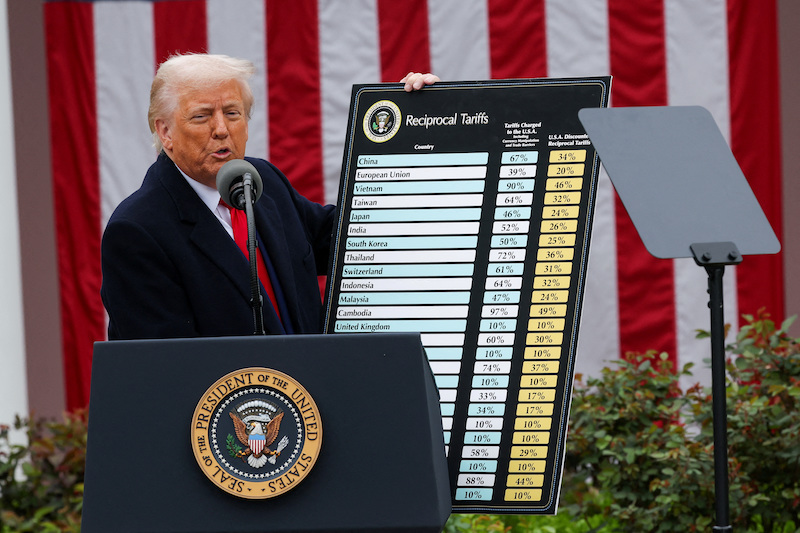Interpretation of U.S. Import Tariff Policy in: Coping Strategies and Compliance Suggestions for International Logistics and Foreign Trade Companies
 2025-04-03
2025-04-03
 32
32

Imgage Source: REUTERS
The Global Trade Balance Act signed by US President Trump on April 2nd has officially come into effect, which implements a hierarchical tariff system:
- Basic tax rate: 10% (covering 80% of imported goods, effective April 5)
- Additional taxes on key economies: 36 countries including China (+34%), the European Union (+20%), and Japan (+24%) (effective April 9)
- Duty-free cancellation for small parcels: Full tax on imported goods under $800 (effective immediately)
Triple impact on international logistics industry
- Transport cost restructuring
The spot freight rate of 40-foot containers on the US-West route rose by 18% in a single week (Freightos Baltic Index), and the average waiting time at ports in the Gulf of Mexico was extended to 8.7 days (S&P data as of April 3) Customs clearance risk escalation - Supply chain restructuring accelerates
Demand for nearshore procurement in North America has surged, warehousing rents in Monterrey Industrial Zone in Mexico have increased by 27% (JLL report), and the occupancy rate of Chinese-funded enterprises in Vietnam industrial parks has reached 92%
CBP has enabled the HS CODE intelligent verification system (AI-MAP), and the tolerance of declaration non-conformity rate has been reduced to 0.3%. It is recommended to enable the priority channel of AEO certification enterprises
Enterprise Response Programme Framework
Policy layer
- Establish a tariff sensitivity assessment model (suggested parameters: commodity profit rate/tax rate elasticity ≥ 1.5)
- Apply for GSP/FTA and other tariff exemption qualifications (medical devices/new energy components can be subject to the China-EU whitelist terms)
Operation layer
- Emergency plan: It is recommended to use DDP clauses to transfer tax burdens for goods arriving in Hong Kong before April 5
- Transportation optimization: high-value goods are transferred to air freight (the utilization rate of Sino-US airlines has reached 89%), refer to the UPS emergency rate table
- Document management: Certificate of Origin + Cost Schedule required (CBP Form 28 new regulations)
Industry warning tips
- Abandonment risk: The abandonment rate of household goods/FMCG category is expected to reach 14% (2023 benchmark value 5.3%)
- Legal Controversy: U.S. Customs Service has received 17 Section 232 unconstitutional lawsuits (involving automotive/PV module importers)
- Alternative: Consider entrepot trade routes (Malaysian Port Klang/Turkish Port Mersin Transfer advantages highlight)























